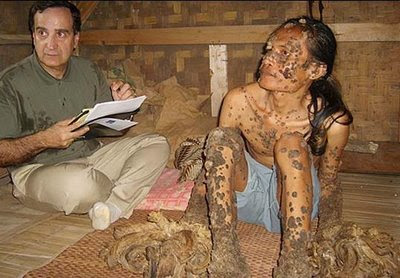

At over 2000 years old, El Arbol del Tule, which is actually an Ahuehuete Cypress, is amongst the oldest living trees in the world. With a 10 meter (33 feet) diameter trunk it is also considered by many to be the broadest tree in the world. The circumference of the trunk is an amazing 54 meters (178 feet) It is over 40 meters (130 feet) high, boasts a foliage diameter of over 51 meters (170 feet), and weighs over 500 tons.
Just look at the adult standing to the left of the tree in the first photo below!
The appearance of the massive tree is that of multiple trunks fused together. Recent DNA tests, however, suggest that it is in fact a single individual tree!
The various contortions of the trunk give the appearance of the faces of goblins and monsters. In fact, if you visit you will be offered a tour of the tree by local school children (an official project) who will show you all manner of creatures hiding in the tree, including elephants and jaguars! If you click on the images on this page you'll see some of the spooky figures trapped in the tree.
This great ahuehuete (Montezuma cypress) specimen is still alive and growing, as can be seen by the dense foliage reaching 43 meters into the sky!
Unfortunately there are concerns about the future well-being of the tree.
















